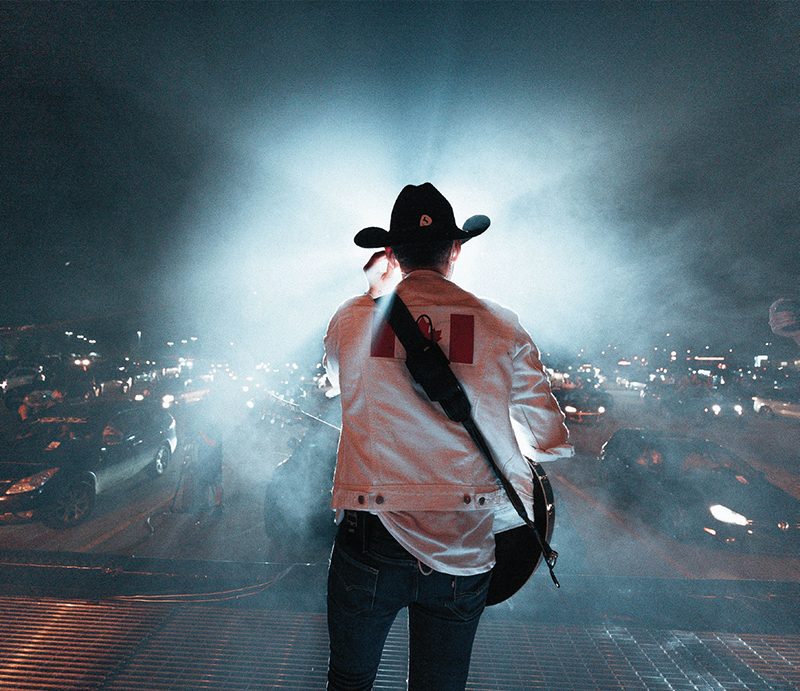
Once that point was reached, however, he adds; “I think that we’d over-engineered it enough that there wasn’t a whole lot that needed to be dialed in.”
Soundbox provided two DiGiCo SD12s with the optional 96 kHz upgrade along with a pair SD Racks outfitted with 32-bit input/output cards for both the FOH mix-to-FM and monitors. The consoles were on an optical loop, running over fiber, Moore explains, adding that while they could have gain-shared using one SD rack, two were deployed to make set up quicker and easier.
“There were also more inputs for monitors, with talkback and so on,” Bleasdell explains, “so we had two SD Racks and instead of having an AES splitter and sending it down a comm send via optical, we ended up with the Axient handhelds going AES into the SD racks so FOH could pick off those lines from the SD Rack.”

Moore says, “The signal output from the SD12 for FOH was then sent to where the audio FOH position would have been and where we had our lighting/video rig and the Decade FM-850 [broadcast] transmitter.”
He also notes that Bird actually mixed the show from backstage, not business as usual but a situation the FOH engineer says wasn’t exactly a hardship. “There were different scenarios.” he explains. “In Edmonton I mixed in a trailer, which turned out really well. For Regina, I set up in the Soundbox truck. But in Saskatoon, because we were playing outside of the SaskTel Centre, I was able to utilize a tour manager’s room close to the loading dock – all different environments, but everything worked pretty much the same.
“I was able to create kind of a live broadcast mix that was leaner than usual, but I didn’t really have to do much differently than what I normally would. I was able to bring a lot of my EQ back and run things a lot flatter because there’s a lot less to deal with in terms of the room. I really didn’t have to go out of my comfort zone and I was so happy with how it turned out.
“The thing that was a little different was that you don’t have to mix – I want to say ‘hard’ – but you don’t have to crank the solos and stuff to get them to cut or use a lot of effects,” he continues. “It was just super clean. In some ways I wish I could mix like that all the time, but I also really like mixing in front of a big PA.” Instead, he used Adamson CS7p compact loudspeakers as monitors even though there were also studio monitors available: “I just stuck with the Adamson stuff and it worked quite well.”
Contingency Plans
For the band, however, the lack of a PA was a potential issue. To compensate for the lack of rumble, two Adamson S10N line array cabinets and S119 subwoofers (per side) were deployed as side fills, along with six Adamson M15 wedges – all powered by a pair of Lab.gruppen PLM20k44 amplifiers.

“Brett and the band never use wedges or fills,” Bundy puts in, “but the wedges gave Brett some additional monitoring and the side fills really just provided some presence; like the energy you’d normally feel from the PA. The other thing I was trying to get enough of was that very unique honking, audience sound for him. When we’re playing indoors, I tune the ambient mics to the room a lot of the time because, for Brett, they’re definitely a big deal. We’ve tried different mics, but Shure VP89M shotguns are the best for us.”
Generally speaking, he adds: “We weren’t expecting to be able to hear or feel the energy of the crowd, but it actually really did come through. Being back, playing live, it was emotional for everyone, so it was critical for me to take what the band put out, elevate it, and send each musician the same amount of energy they gave me without damper. I felt we needed to fill in that gap left by not having a PA, because the guys definitely feed off that energy from FOH, especially Brett.”
